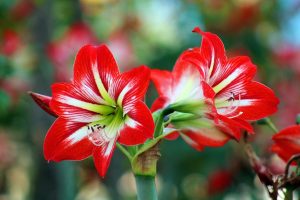This guide offers in-depth information on the vegetables, flowers, fruits, and herbs suitable for planting in Florida in May.
Vegetables To Plant
Tomatoes
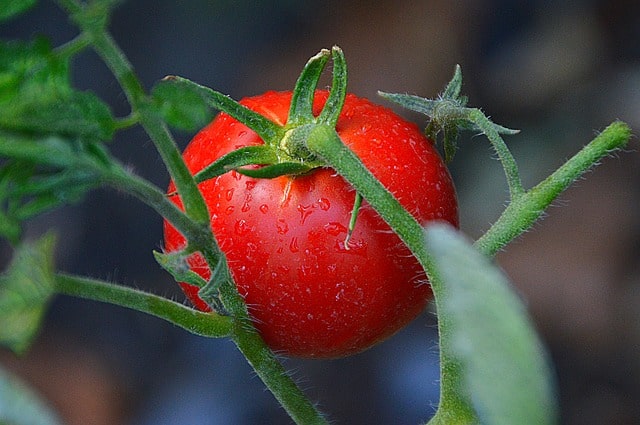
Tomatoes are among the most popular garden vegetables in Florida. Consider starting with transplants in May instead of seeds to get a head start during this warm season. Key varieties include ‘Heatmaster’, which is bred specifically for high temperatures, and ‘Celebrity’, which is known for its disease resistance. For optimal growth, tomatoes should be planted in well-draining soil rich in organic matter and should be spaced about 24-36 inches apart. They perform best in full sun, meaning at least 6-8 hours of direct sunlight daily. During the hottest days of summer, consider providing partial shade or using mulch to retain soil moisture.
Peppers

Bell peppers and hot peppers thrive in the warm climate of Florida and can be direct-seeded or transplanted in May. For best results, choose varieties like ‘Jalapeño’, ‘Cayenne’, or ‘California Wonder’. These plants prefer well-drained, sandy-loam soil and will benefit from fertilizers that are high in potassium and phosphorus. Ensure that each plant has a minimum spacing of 18-24 inches to allow air circulation, reducing the risk of fungal diseases. Regular watering is critical, especially during dry spells. As summer heat peaks, consider providing occasional shade to protect younger plants from scorching.
Cucumbers
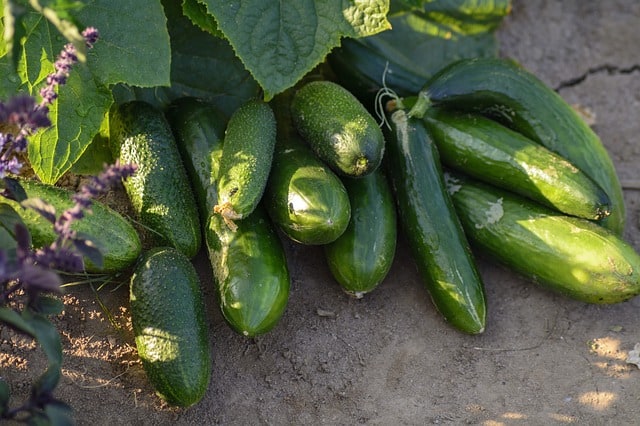
Cucumbers can be sown directly into the ground in May, but early planting (late April to early May) offers even better results. Varieties, such as ‘Marketmore 76’ and ‘Straight Eight’, are ideal for Florida’s warmth. Cucumbers require full sun and well-draining, nutrient-rich soil to produce healthy fruit. It is recommended to set up trellises to train cucumbers to climb, creating space for other plants and improving air circulation. Maintaining consistent moisture is important, as cucumbers have shallow roots that can dry out quickly during a hot Florida summer.
Squash
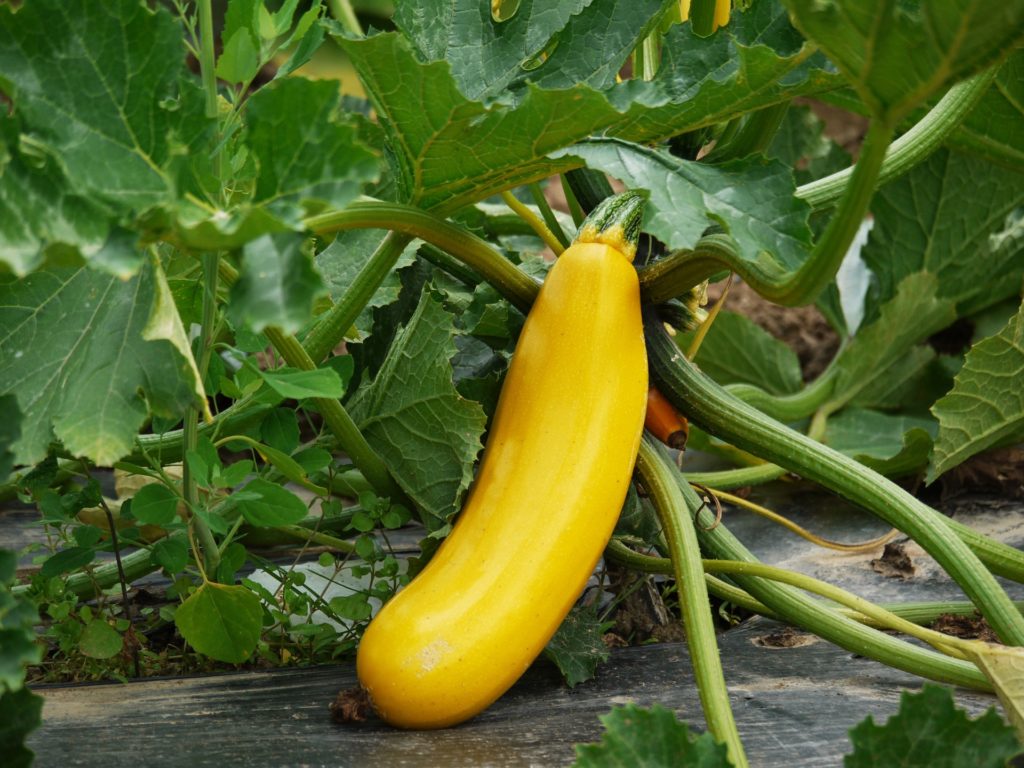
Summer squash, particularly zucchini, should be sowed directly into the soil in May. They thrive in soil with high organic matter for the best yield and require regular watering, especially during flowering and fruiting. Space squash plants around 24 inches apart to allow for their expansive foliage. The warm soil temperatures in May provide ideal germination conditions, with most varieties sprouting within a week. Keep the area free of weeds to reduce competition for nutrients and water.
Beans
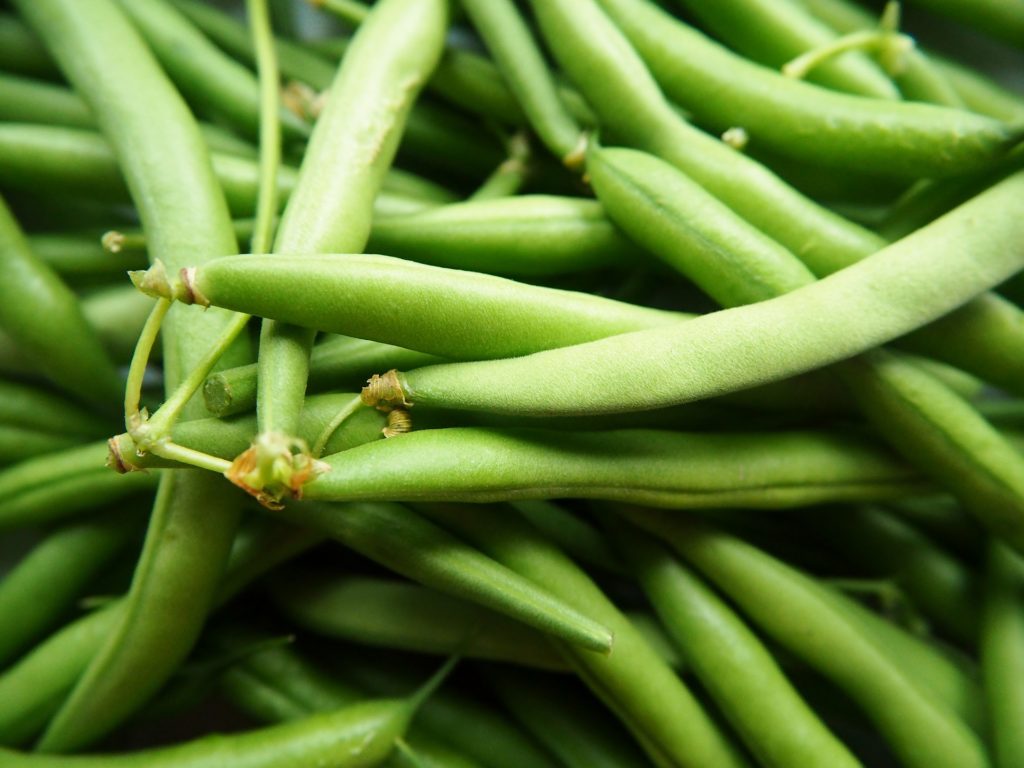
Beans are versatile and easy to grow, making them a perfect choice for home gardens. Plant bush types or pole beans in May to take advantage of the warm soil temperatures. Beans can fix their own nitrogen, improving soil health for future crops. They prefer well-drained soil and full sun to grow rapidly. Ensure each seed is spaced about 2-4 inches apart for adequate airflow and room to grow. Due to Florida’s summer humidity, be vigilant against common pests such as aphids and spider mites.
Okra
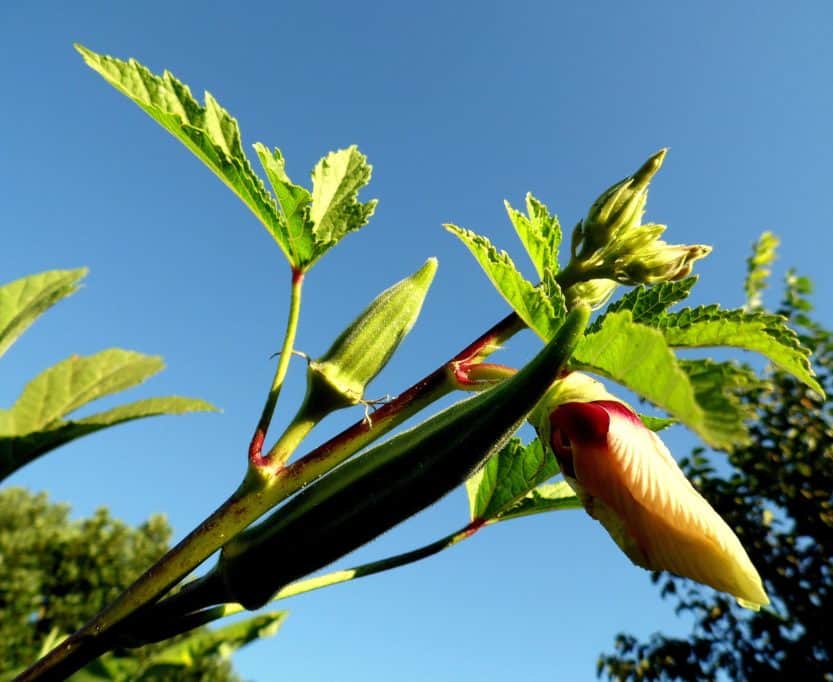
Okra is a heat-loving vegetable that can be directly seeded into the garden in May. It takes about 60-80 days to mature and grows well in fertile, loamy soil. Expect germination within a week or two with adequate warmth. Okra requires full sunlight and should be spaced about 12-18 inches apart to allow for expansive foliage. Regular harvesting encourages more pods to form throughout the season, so keep an eye on the plants as they grow.
Eggplant
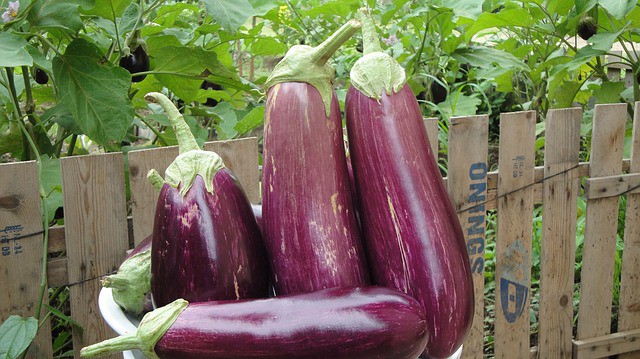
Eggplants can be planted in the ground during May, allowing time for their rapid growth in warm temperatures. They prefer rich, loamy soil with a pH between 5.5 and 7. This plant needs consistent moisture, especially during the fruit development stage. Space eggplants about 24-30 inches apart to provide them enough room to flourish. Consider supporting larger varieties with stakes as they mature to help prevent breakage from heavy fruits.
Sweet Corn
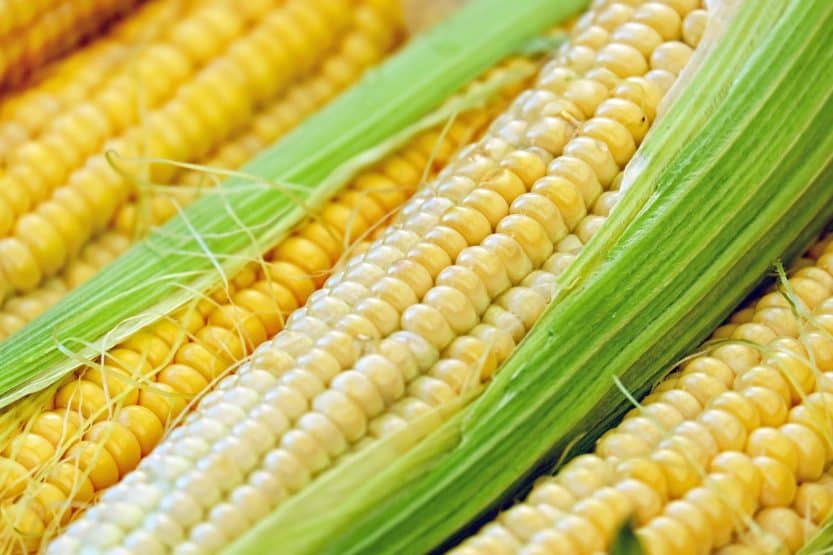
Corn thrives in Florida’s warm climate, and May is the optimal time for direct seeding. Plant in blocks rather than rows to enhance pollination, as corn is wind-pollinated. Ensure that soil is well-draining, as corn dislikes waterlogged conditions. It typically requires at least 6-8 hours of full sun each day and should be spaced about 12 inches apart to promote good air circulation.
Beets
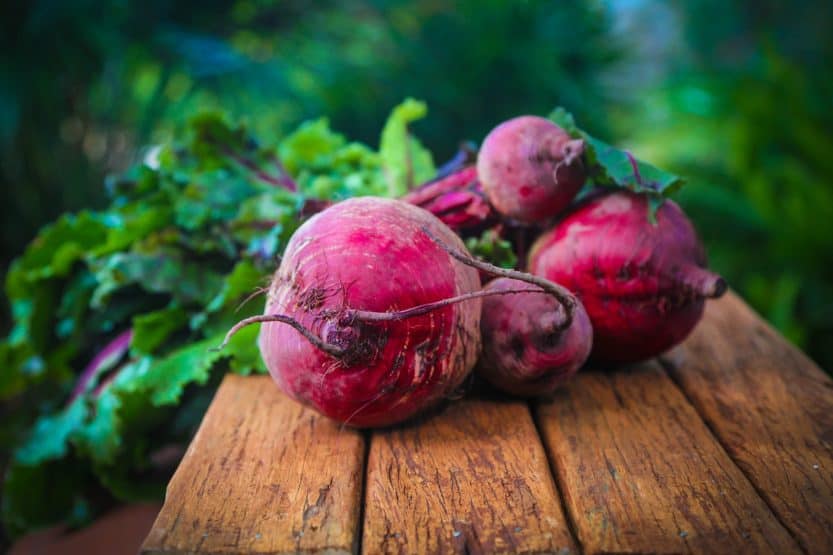
Beets are well-suited for Florida’s climate when planted in May. They prefer well-drained soil enriched with organic material. Space seeds about 2-3 inches apart, and thin the seedlings to about 4 inches once they emerge for healthier growth. Beets can tolerate a range of temperatures but grow best between 55°F and 75°F. Regular watering is vital, particularly during intensive summer heat.
Sweet Potatoes
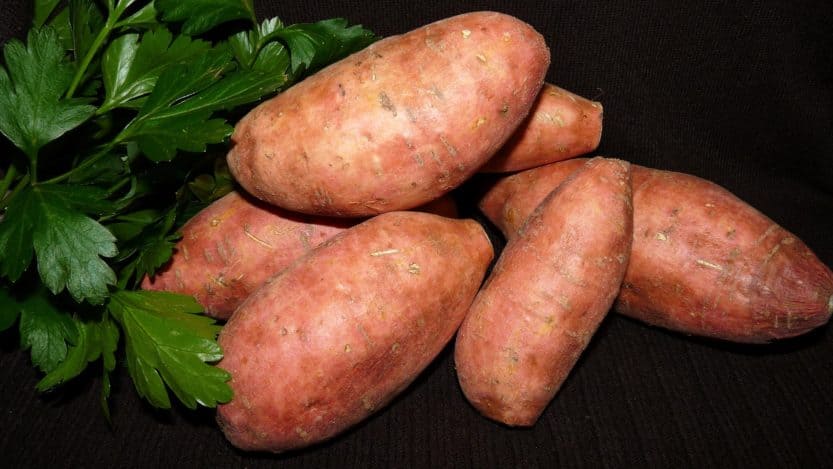
May is the ideal month for planting sweet potatoes as the risk of frost has passed. Use slips, which are young plants, and ensure they are set in well-draining sandy soil. Sweet potato plants thrive in full sun and require consistent watering, especially during the first month after planting. These plants can grow sprawling vines, so provide ample space of about 3 feet between slips.
Tropical Flowers To Plant
Bougainvillea
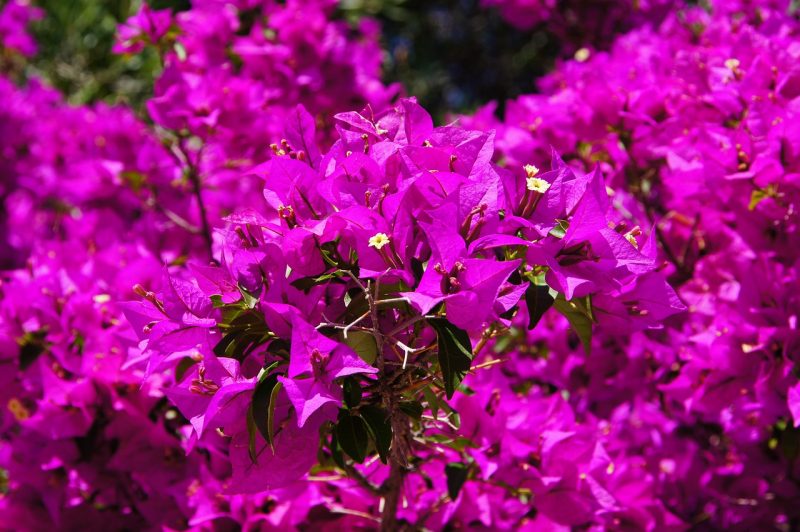
Bougainvilleas are valued for their vibrant colors and hardy nature. When planting in May, ensure that you choose a site with full sun to achieve maximum blooming potential. They prefer well-drained soil and can handle periods of drought once established. Bougainvilleas can be pruned to control their size and encourage bushiness. Be aware that while they are low-maintenance, they require regular fertilization to encourage profuse blooming.
Hibiscus
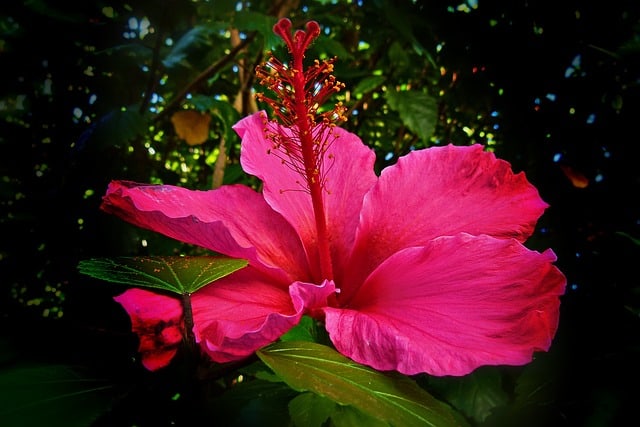
Hibiscus are popular for their stunning show of blooms in various shades. Plant in well-draining soil with plenty of sunlight for optimum growth. Hibiscus can be grown as shrubs or in containers, providing versatility in landscaping. Regular watering is essential, especially during dry periods, and feeding with a slow-release fertilizer can enhance flowering throughout the summer.
Lantana
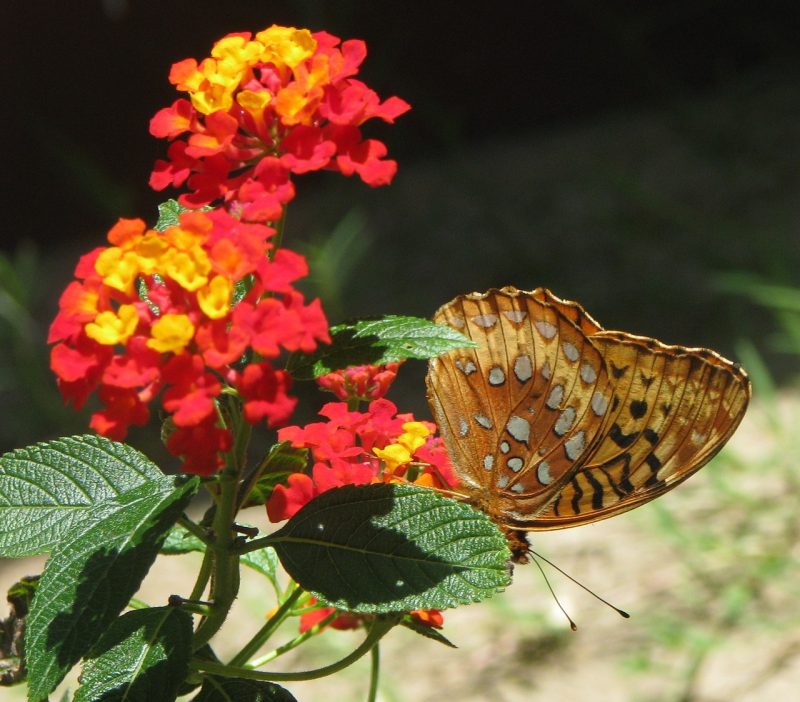
Lantana is a hardy perennial that tolerates drought and poor soils quite well. For best results, plant in an area that receives full sun. These plants are known for attracting butterflies and other pollinators, making them an excellent choice for a sustainable landscape. Pinching back spent blooms encourages continued flowering and a bushier growth habit.
Plumbago

Plumbago is a unique flowering vine that produces clusters of blue or white flowers, providing stunning visual interest. Select a location that receives full sun to partial shade. It’s important to keep this plant well-watered during the establishment phase; once rooted, it’s drought-resistant. Pruning after the blooming season can promote more vigorous growth.
Mandevilla

Mandevilla vines are known for their beautiful trumpet-shaped flowers and can climb trellises with ease. When planting in May, ensure they have full sun to thrive. They prefer rich, well-drained soil and will require regular watering while they establish. Cut back any dead vines in early spring for regrowth and prune after flowering to maintain shape.
Allamanda
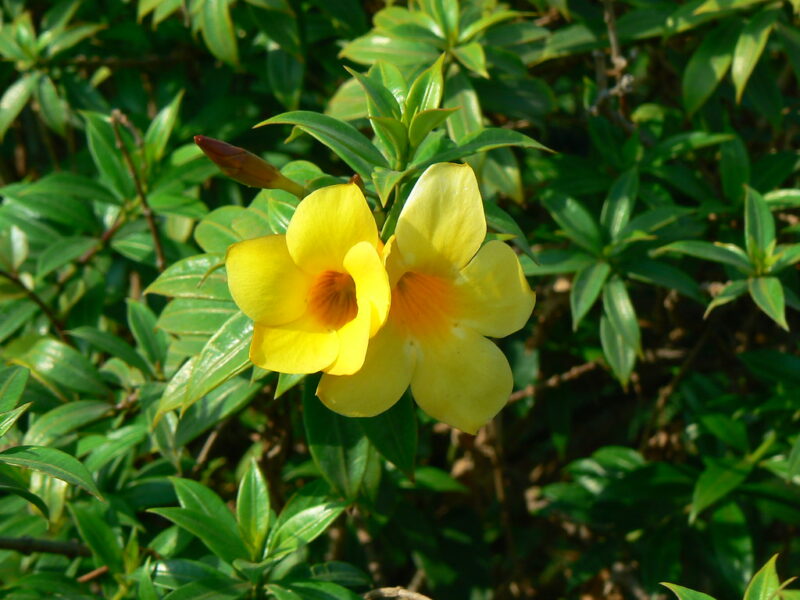
Allamanda’s bright yellow flowers can light up any garden setting. Planting in May allows it to thrive in full sun for maximum bloom. These plants prefer slightly acidic to neutral, well-draining soil and do not require much fertilizer. Pruning is recommended to remove dead growth and promote flowering.
Canna Lily
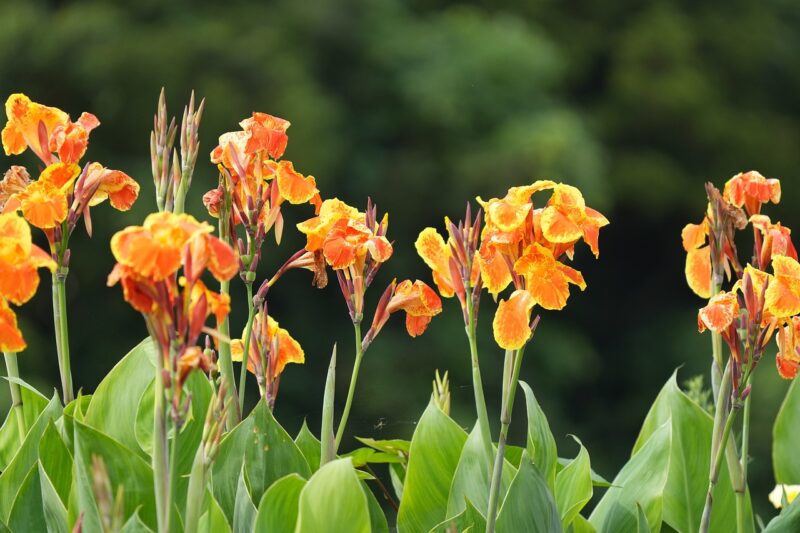
Canna lilies provide bold foliage and striking blooms, creating eye-catching displays. May planting benefits from the warm soil allowing bulbs to germinate quickly. They appreciate moist soils and full sun, and will grow well in sunny borders or as focal points among other garden elements.
Ixora
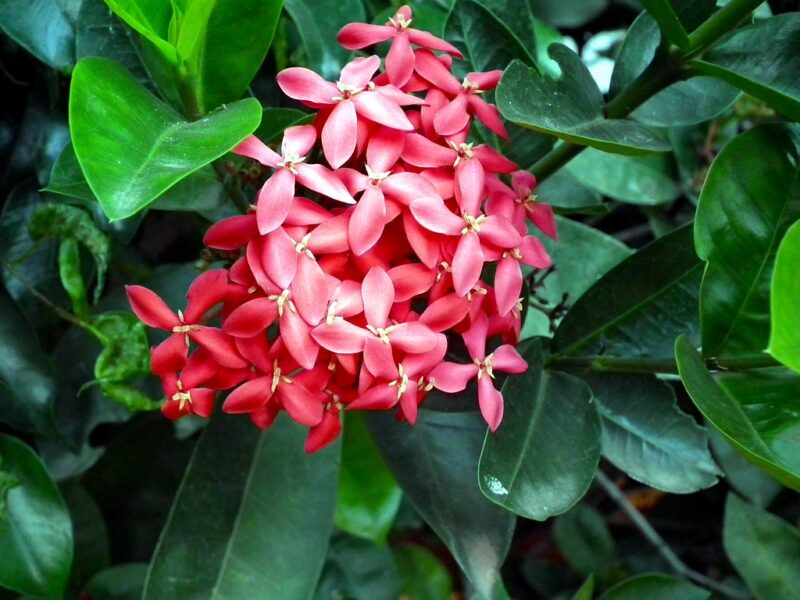
Ixora is a compact shrub that produces clusters of small flowers. It’s best planted in May to give it time to establish before the hot summer. They do well in nutritious, well-drained soil and need regular watering. Fertilizing with a slow-release formula in the spring can help boost flower production throughout the hotter months.
Pentas
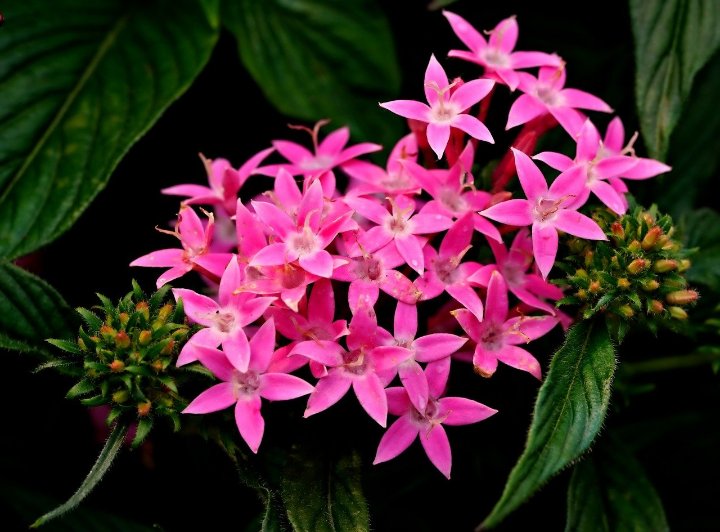
Pentas are colorful flowering plants that attract butterflies and are perfect for flower borders. They thrive in warm sunshine, requiring at least six hours of direct sunlight per day. Planting in May means that they will establish well before summer hits. They prefer well-drained soil, and watering regularly encourages lush blooms.
Zinnia
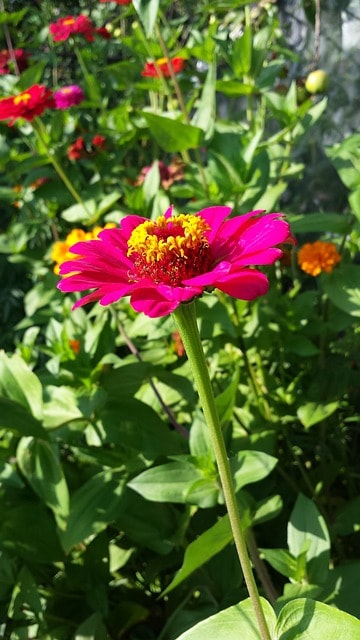
Zinnias are bright and cheerful flowers that grow quickly from seed. May is an excellent time to sow zinnia seeds directly in the garden or start transplants. They require at least 6 hours of sunlight and tolerate poor soil. To encourage longer blooms, regularly deadhead the spent flowers.
Tropical Perennial Flowers To Plant
Agapanthus
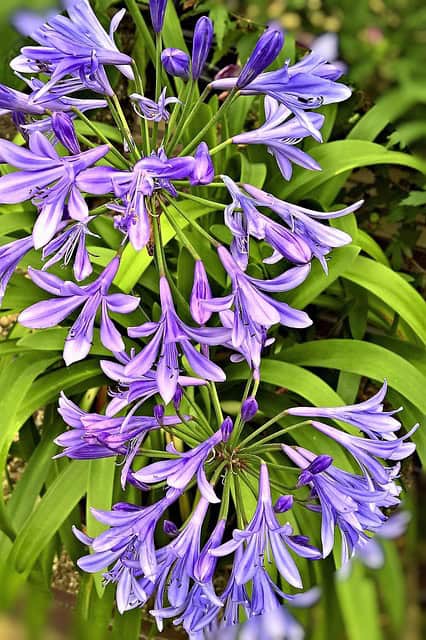
Agapanthus, or African lilies, produce stunning clusters of blue or white flowers in the summer. They prefer full sun and require well-drained soils. Planting in May gives these perennials the chance to establish roots before the summer’s heat. They are drought-tolerant once established but will benefit from regular watering during prolonged dry periods.
Egyptian Lotus
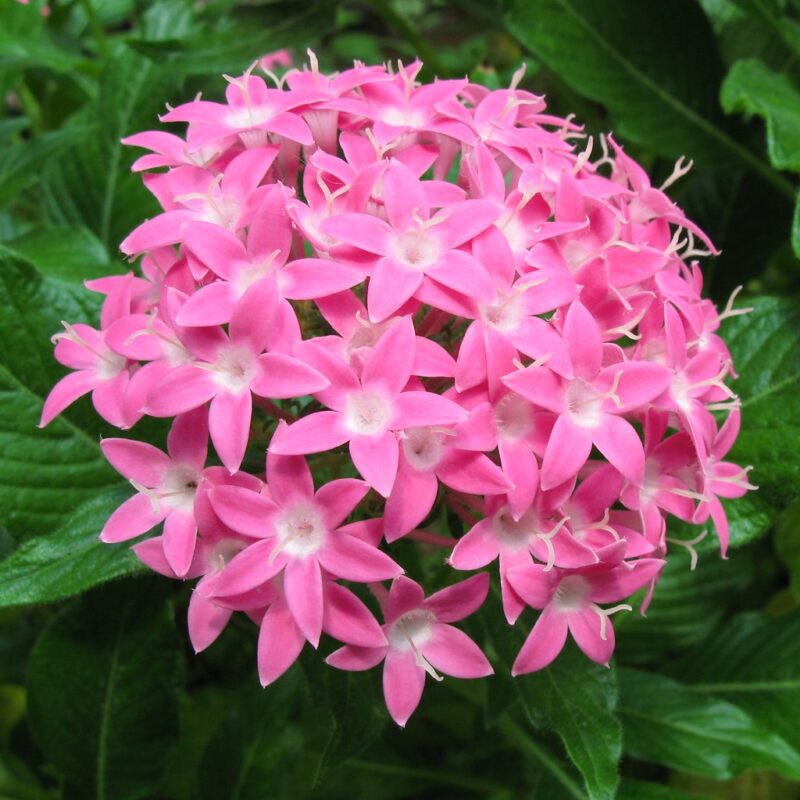
The Egyptian lotus can flourish when planted in warm water bodies. When establishing in ponds or water gardens, ensure that the soil is kept saturated, as this aquatic perennial thrives in moist environments. Spring or early summer planting allows sufficient time for growth before the blooms appear in late summer.
Bird of Paradise
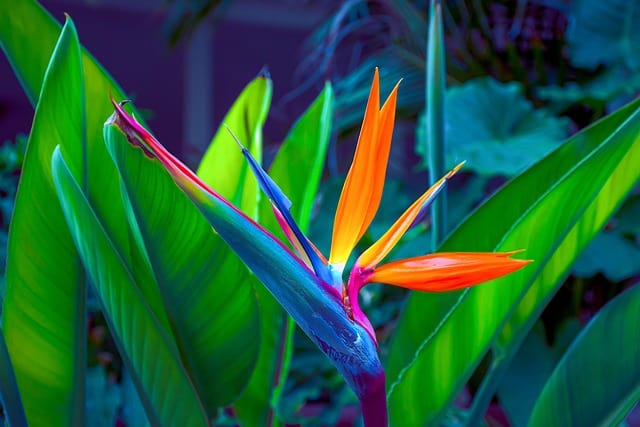
The majestic Bird of Paradise plant produces flowers resembling exotic birds. Planting in May enables successful establishment as the weather warms up. These plants can reach significant heights and prefer well-draining soil with full sun exposure. Regular watering during dry periods promotes healthy growth and flowering.
Coral Honeysuckle
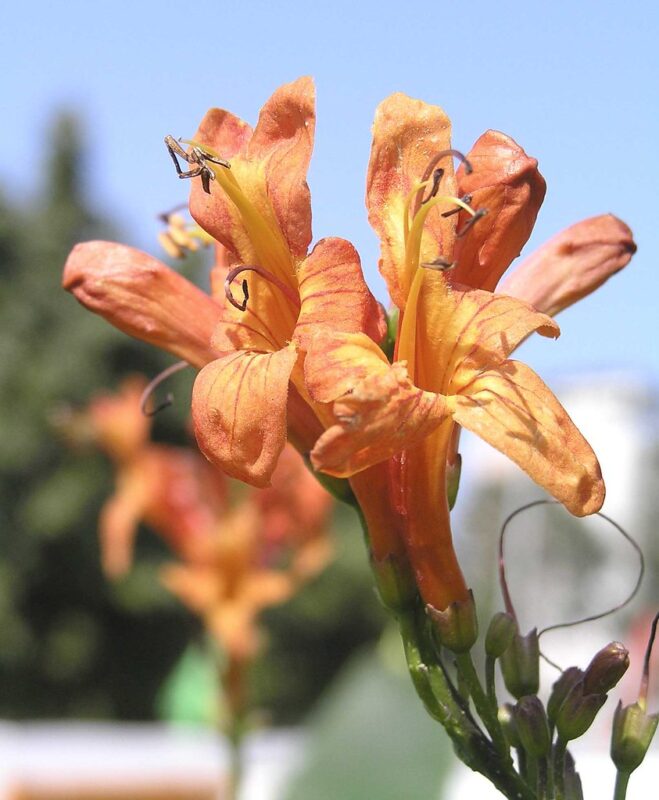
Coral honeysuckle is a native vine that thrives in warmer months. May planting allows for establishment as it climbs towards the sun. This plant provides nectar for hummingbirds and can be trained on trellises or fences. It thrives in well-drained soils and can withstand dry periods.
Plumeria
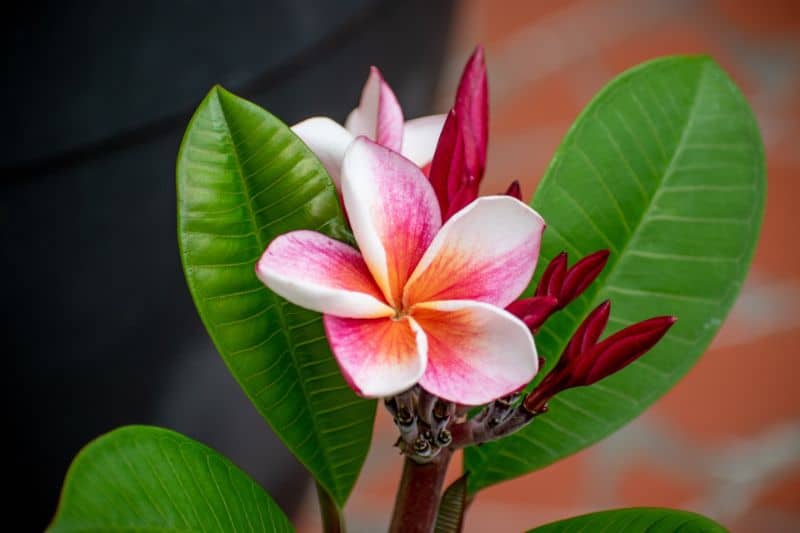
Plumeria, also known as frangipani, emits a delightful scent from its flowers. When planted in May, the young plants will establish quickly during the warm weather. These plants need at least six hours of full sun and prefer well-draining soils, as they are sensitive to overwatering. Once established, plumerias are relatively low-maintenance.
Crape Myrtle
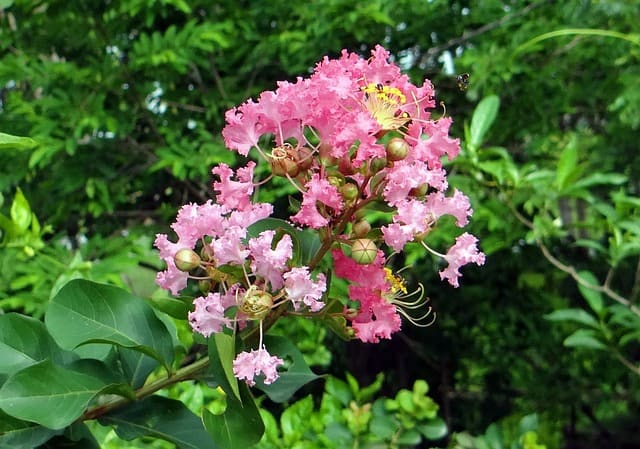
Crape myrtle is well-suited for Florida’s climate and adds beautiful summer color with its spectacular blooms. Planting in May allows roots to establish before peak heat. They prefer sandy or loamy soils and benefit from regular watering in the first year after planting. Pruning in late winter can encourage a fuller bloom.
Daylily
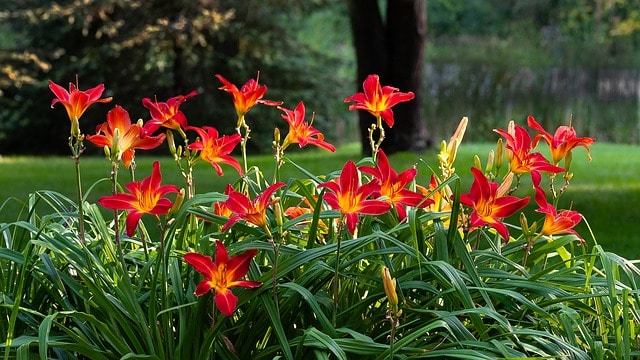
Daylilies are adaptable to various soil conditions and thrive in warmer temperatures. Planting in May enables these hardy perennials to establish fresh roots before bursting into vibrant blooms. They require full sun but tolerate partial shade and are low-maintenance once established, making them great for any garden.
Echinacea
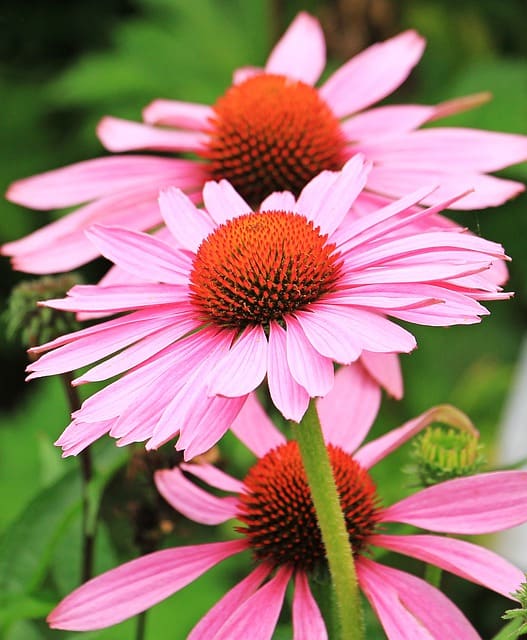
Echinacea, or coneflower, is a robust perennial that attracts butterflies. Planting in May allows this flower to reach maturity as temperatures rise. They prefer well-drained soils and thrive in full sun. Echinacea is drought-resistant once established and can last through multiple growing seasons.
Sedum
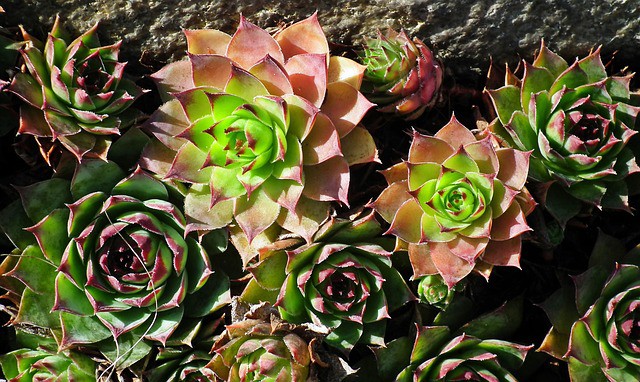
Sedum comes in various forms and is known for its succulent leaves. It can tolerate poor soils and semi-dry conditions. Planting during May allows the plant to establish and thrive in summer heat. They require full sun and good drainage to flourish and offer easy-care for gardeners.
Black-eyed Susan
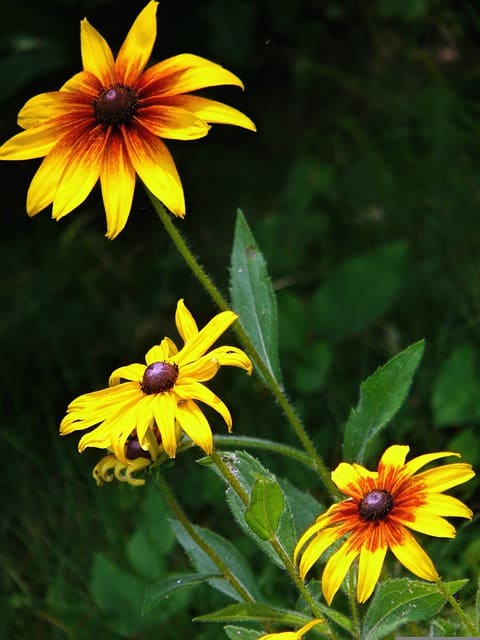
Black-eyed Susans are cheerful yellow perennials that can add a sunny vibrance to gardens. Planting them in May ensures that they become established before the sweltering summer months. They thrive in well-drained soils and benefit from regular watering as they establish, providing long-lasting blooms into fall.
Tropical Bulbs To Plant
Gladiolus

Gladiolus bulbs should be planted in well-draining soil in full sunlight in May for stunning summer blooms. Choose healthy bulbs and plant them 4-6 inches deep with the pointed end facing upwards. Gladiolus requires regular watering, avoiding waterlogged conditions, and can benefit from a liquid fertilizer to enhance blooming.
Dahlias
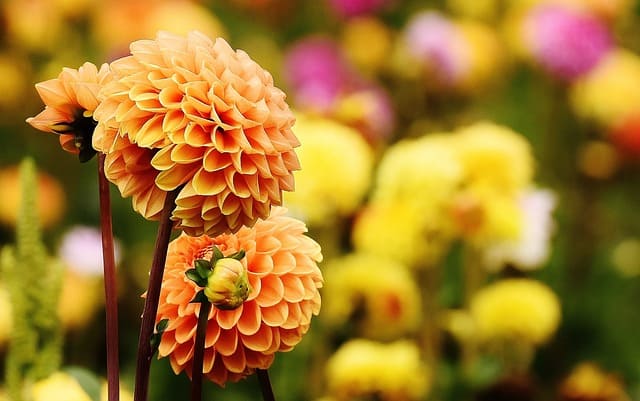
Dahlia bulbs prefer well-draining, nutrient-rich soil and benefit from sunny locations. Planting in May allows for ample growth before the summer blooms. Dahlias should be spaced about 18 inches apart to promote good airflow and prevent fungal diseases. Regular deadheading will encourage more blooms throughout the season.
Calla Lily
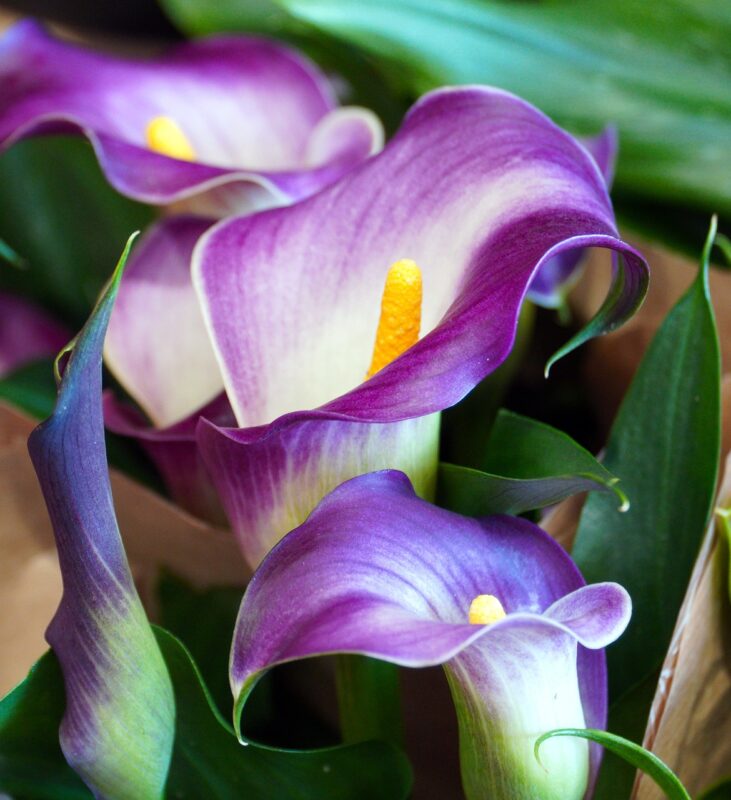
Calla lily bulbs should be planted in moist, well-drained soil; they prefer partial shade to full sun conditions. By planting in May, these stunning flowers will grow robustly before the summer months. Water regularly to keep the soil moist, particularly during hot spells, but avoid waterlogging.
Cannas

Canna lilies thrive in moist soils and sunny locations making May a perfect month for planting. Plant bulbs about 4-6 inches deep and ensure they receive at least 6 hours of sunlight daily. Regular watering will enhance their growth, and remember to fertilize every few weeks to promote blooms.
Begonias
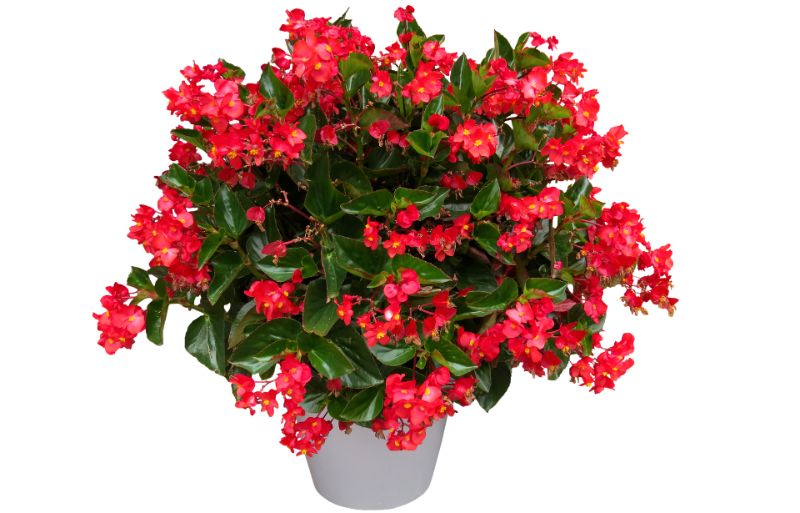
Begonia tubers should be planted in well-draining soil and partial shade for best results. Plant in May to allow sufficient time for growth before heat peaks. Keep the soil consistently moist but not soggy – regular watering will promote lush foliage and beautiful blooms throughout the summer.
Freesia
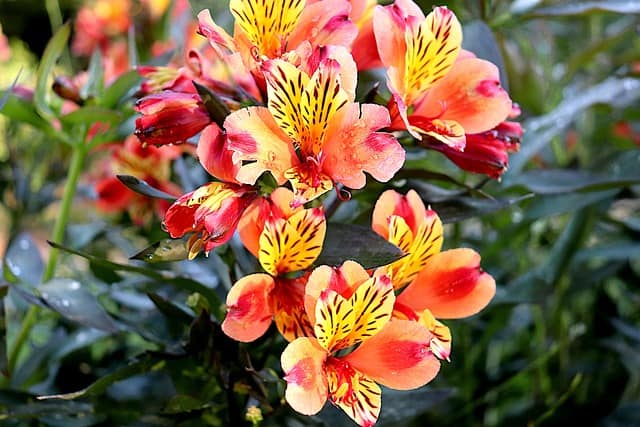
Plant freesia corms in well-draining soil enriched with organic matter for vibrant blooms. May planting ensures that the bulbs establish before the heat sets in. Freesias prefer full sunlight but can benefit from afternoon shade during hotter months.
Tuberose

Tuberose bulbs should be planted in warm soil, making May an excellent choice. They prefer full sun and well-drained soil. Provide consistent moisture through regular watering, especially during dry spells, and ensure bulbs are planted about 4-6 inches apart to accommodate their growth.
Amaryllis
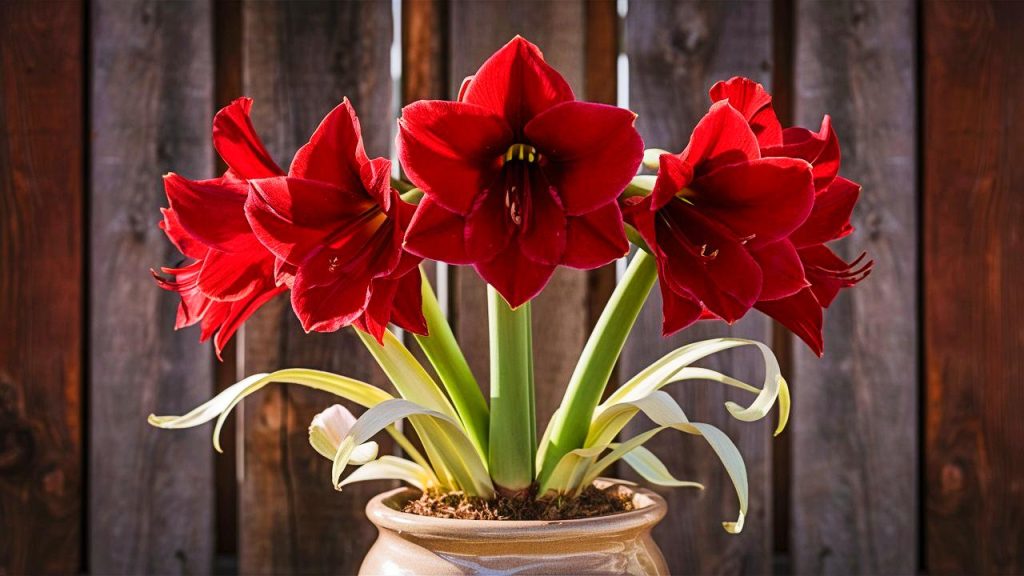
For amaryllis, select a warm and sunny location to plant bulbs in May. They thrive in free-draining soil and opt for partial shade or full sun. Water moderately to avoid rot, allowing the foliage to grow vigorously during the summer months while anticipating beautiful blooms.
Nerine
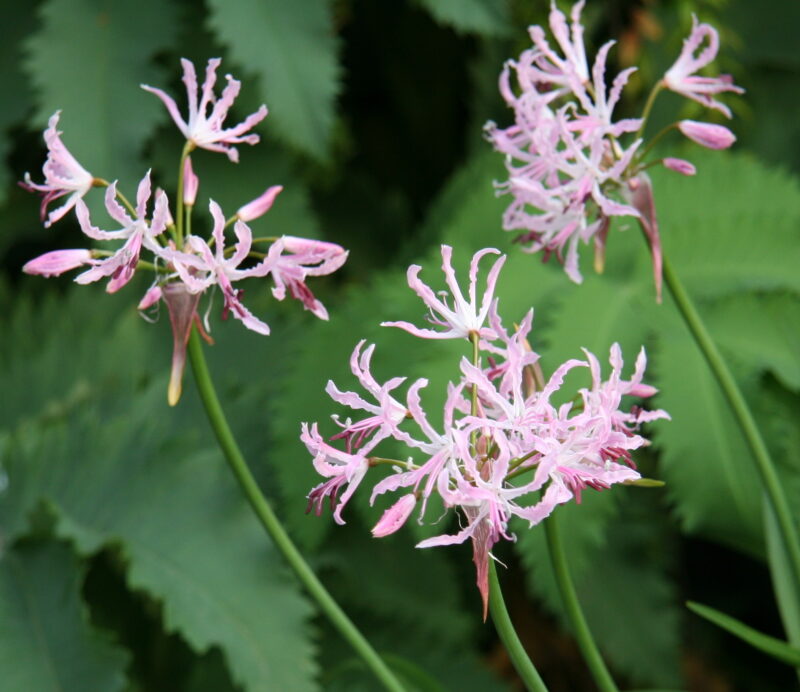
Nerine bulbs prefer well-draining soils with a sunny position. Planting in May allows the bulbs to settle and establish roots. They require regular watering, especially during the growing period. Once established, these plants are drought-tolerant and will produce striking blooms in late summer and autumn.
Dutch Iris

Dutch iris bulbs are best planted in rich, well-draining soil in May. They require full sun for optimal growth and flowers. Plant bulbs 3-6 inches deep and about 4-6 inches apart. Regular watering through the established period will control growth and promote strong blooming later in the summer.
Tropical Fruits to Plant
Pineapple
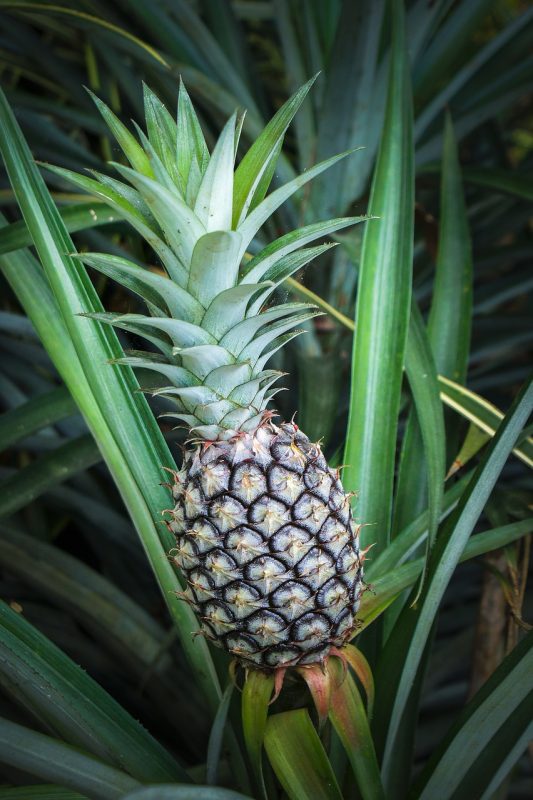
Pineapples are best started from tops of full-grown fruits. Planting crowns in well-draining soil in May will set them on a path for success. Choose a sunny location, and occasionally water to keep the soil moist but not soggy. Pineapples may take 18-24 months to mature, but the wait is worth it for that delicious fruit.
Mango
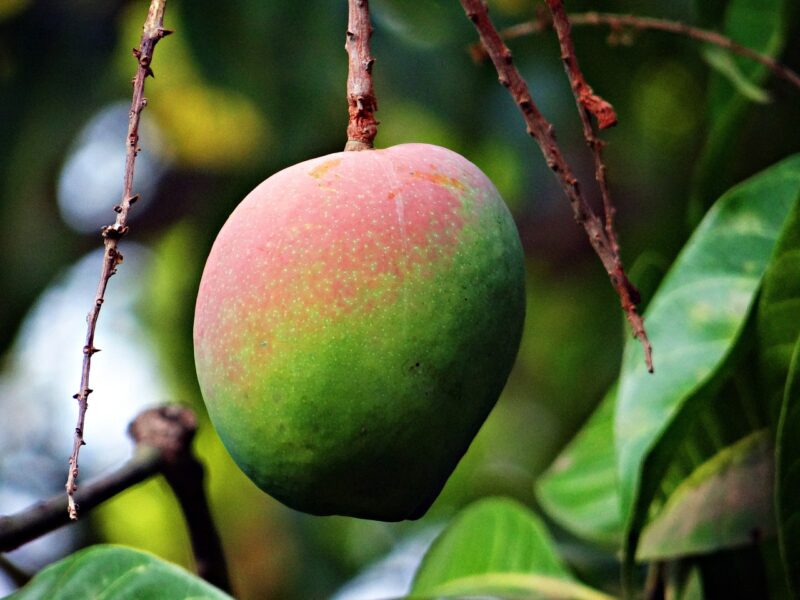
Mango trees planted in May will benefit from the warm conditions that Florida offers. Ensure they are planted in well-drained soil and receive full sun. Young mango trees require regular watering until established, afterward they become quite drought-resistant. Fertilize them periodically to support healthy growth.
Papaya
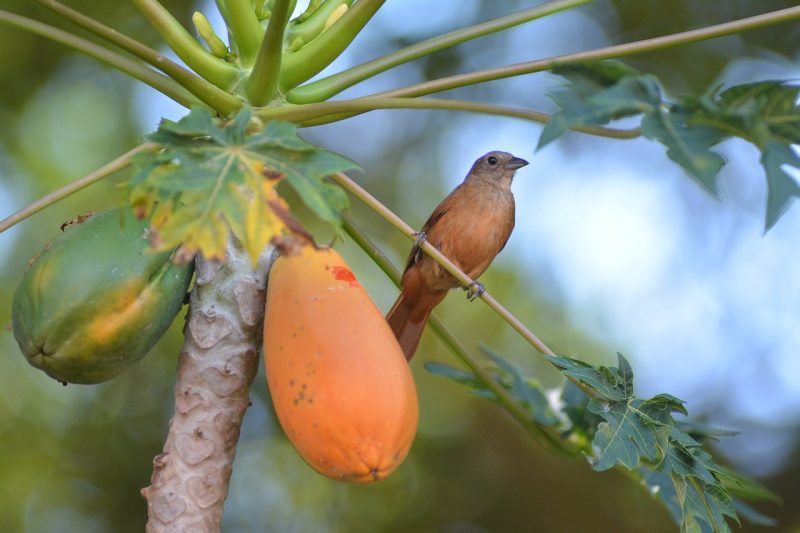
Papayas grow quickly, making them an excellent choice for May planting. These trees prefer rich, well-drained soils and thrive in sunny conditions. They produce fruit within a year under optimal conditions, provided they have enough water and nutrients throughout their growth phase.
Passionfruit
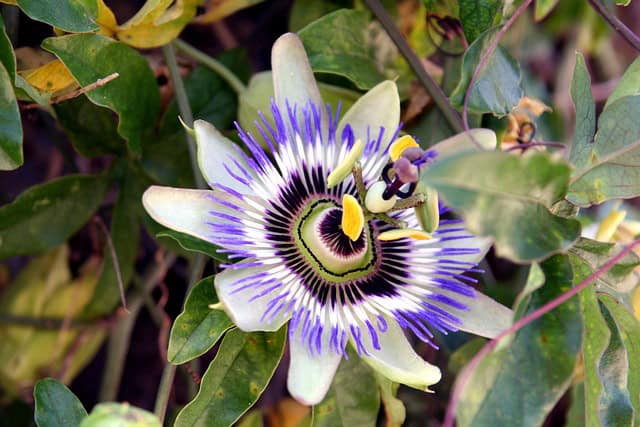
Passionfruit vines thrive in the warm temperatures of May. Plant them in well-drained soil with full sun exposure. Passionfruit can quickly cover fences or trellises for vertical gardening. Water regularly to promote vigorous growth, and as plants mature, prune them to control their spread.
Guava
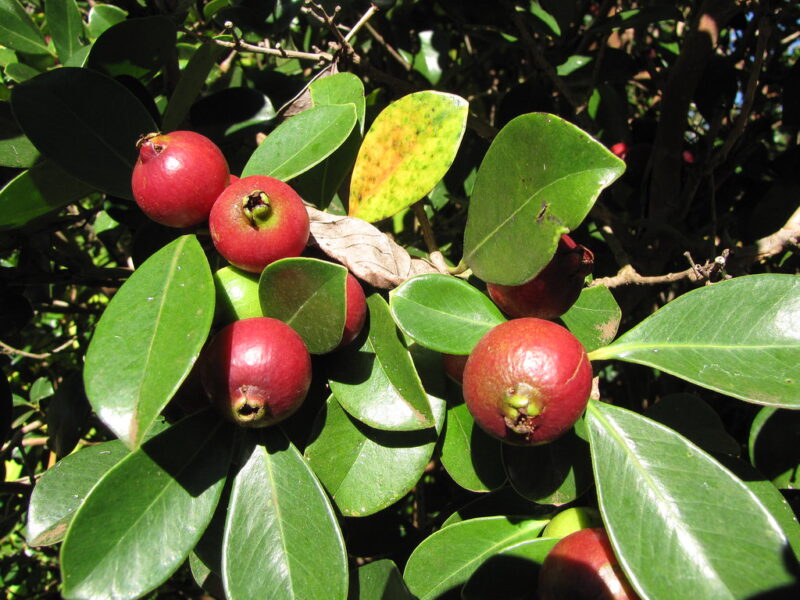
Guava trees thrive in Florida’s warm environment and can be planted in May. They prefer sunny locations and well-drained soils. Guavas can be somewhat drought-tolerant once established, and regular watering during the formative phase is essential. They usually bear fruit from summer into fall, making them a timely addition to your garden.
Lychee
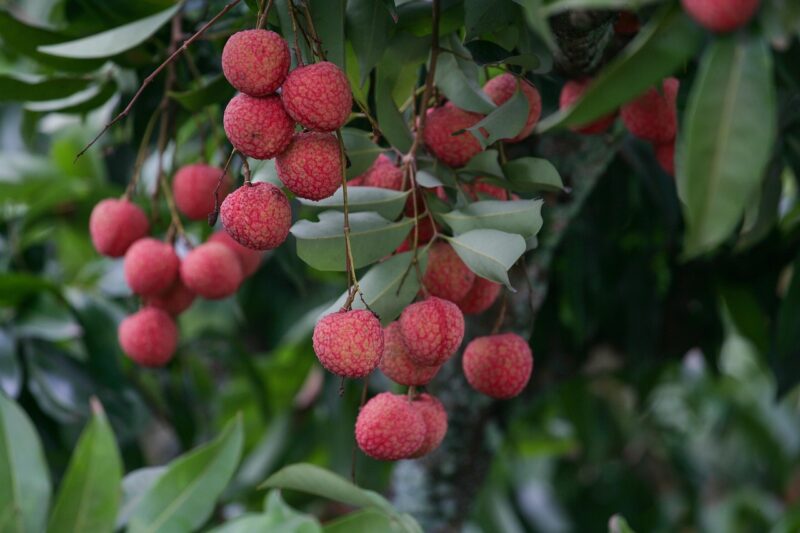
Lychee trees appreciate warm climates and can be planted in May when soil temperatures rise. They prefer rich, well-drained soils and require consistent watering. While they can tolerate some shade, they grow best with plenty of sunlight. Expect fruit in the late summer months after establishing well.
Starfruit
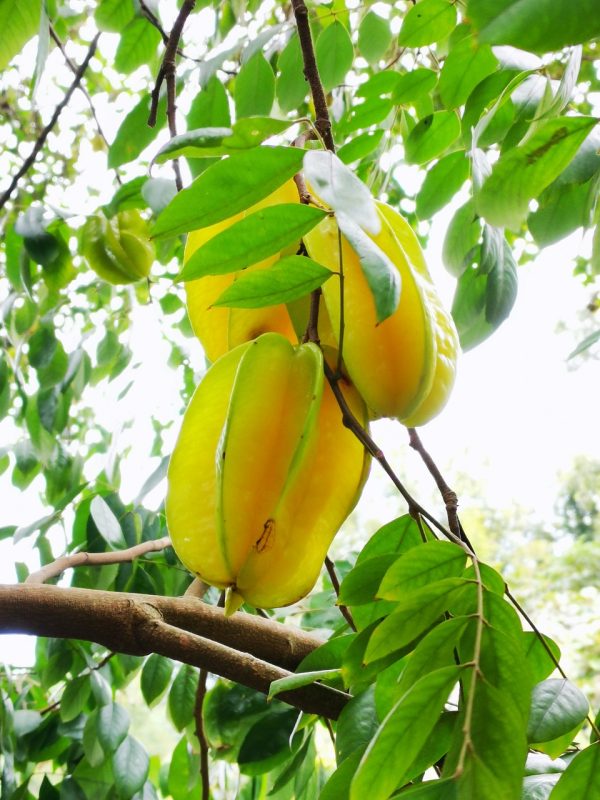
Starfruit, or carambola, can be planted in May and enjoys well-drained soil and full sun. Regular watering is vital during the establishment period as they prefer moisture. As a slow-growing tree, starfruit will provide a unique fruit shape and flavor to your garden when mature.
Jackfruit
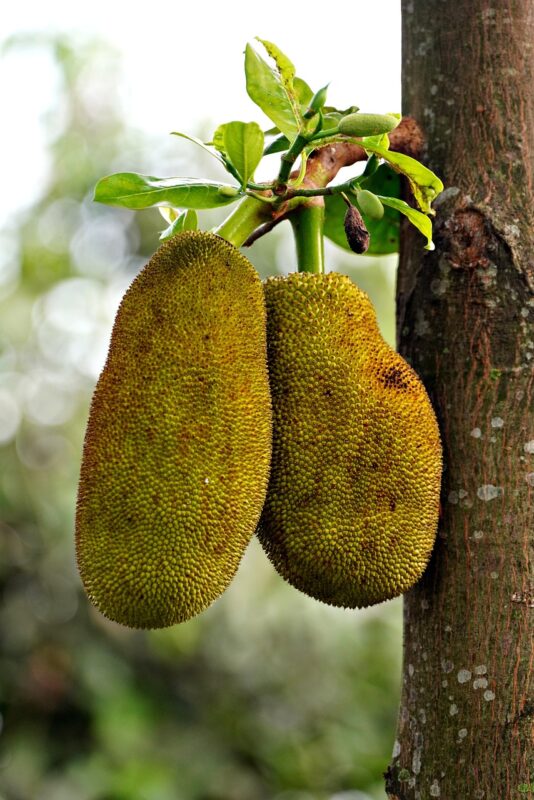
Jackfruit trees require plenty of space as they can grow quite large. May is an ideal month for planting, as they prefer warm, sunny environments. Ensure they receive regular water while they are young, and they can produce remarkable fruit in the summer months.
Mulberry
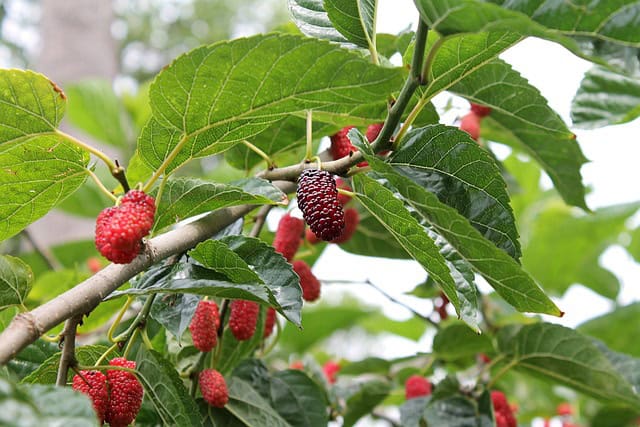
Mulberry trees are adaptable and can thrive in various soil types. They do well in sunny conditions and require regular watering during the initial growth phase. May planting gives them a head start, and with proper care, you’ll enjoy fruit from spring to summer.
Blueberry
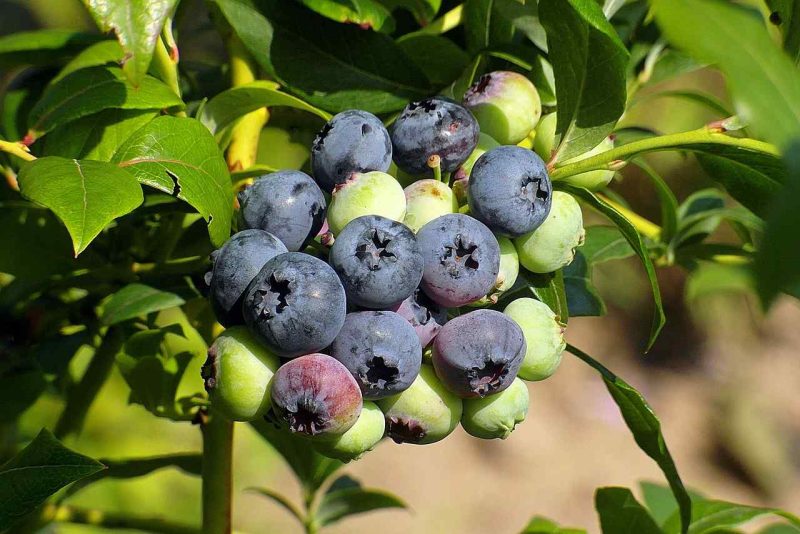
Southern Highbush blueberries are suitable for Florida gardens and can be planted in May. They thrive in acidic soils with a pH of around 4.5 to 5.5. Ensure they receive full sun for the best harvest and keep them well-watered, especially during the first year of growth. Blueberries can yield fruit in the melting heat of summer.
Herbs To Plant
Basil
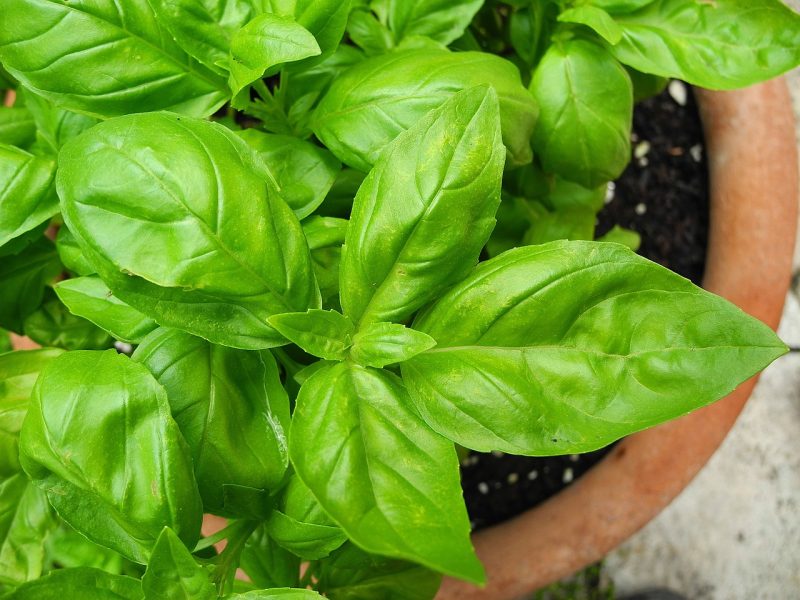
Basil can be easily grown from seeds or transplants in May with just a little attention to watering and light conditions. It loves the warmth and requires full sun along with well-drained soil rich in organic matter. Regular pinching of the tops will encourage bushy growth and prevent early flowering.
Rosemary
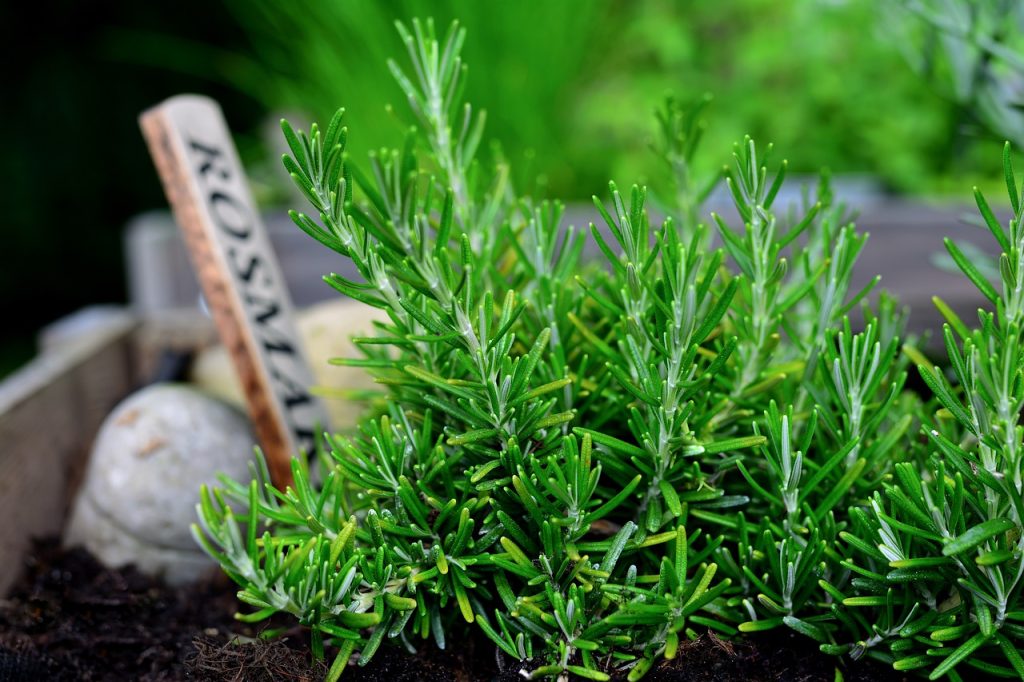
Rosemary is drought-tolerant and flourishes in well-draining sandy soils. When planting in May, ensure the herb gets plenty of sunlight and minimal water initially until roots are established. Once mature, rosemary can thrive with little care, making it a favorite for culinary uses.
Oregano
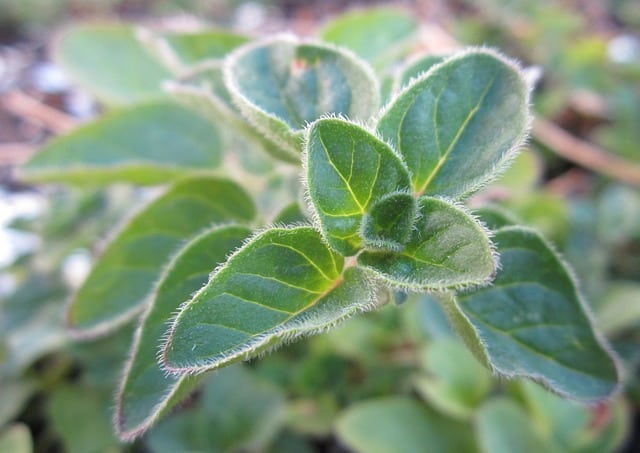
Oregano is a hardy herb that tolerates poor soil and dry conditions. Planting in May enables them to establish before the greatest heat and maintains growth throughout the summer. To ensure strong flavor, pinching back will encourage bushiness, and oregano does well in sunny spots.
Thyme
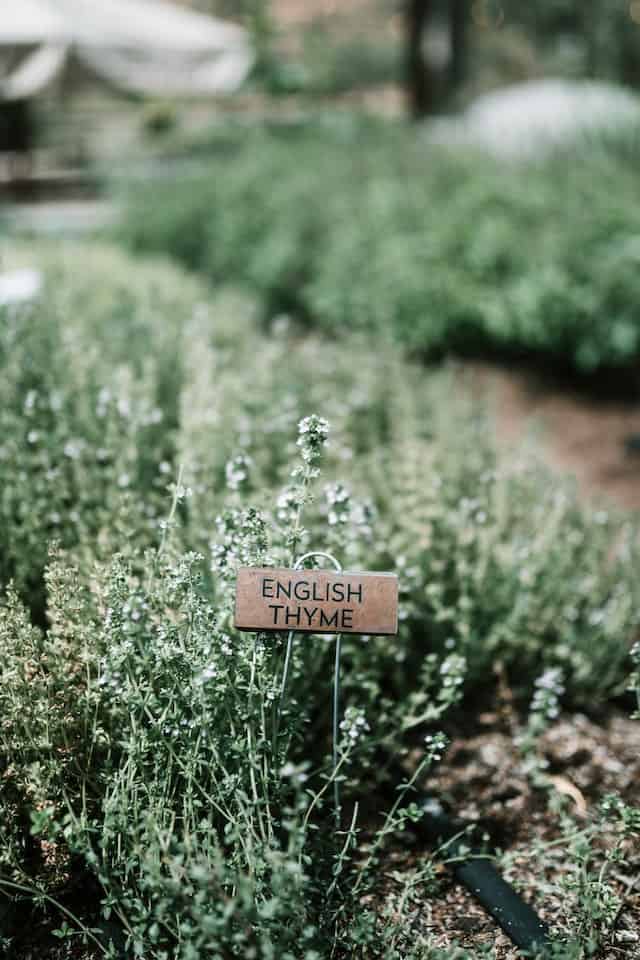
Thyme is aromatic and thrives in well-drained soil; therefore, planting in raised beds can enhance its performance in sandy Florida soil. May is a perfect time to plant, as it requires moderate watering during the initial planting phase. Thyme performs better when not overwatered and can tolerate dry spells.
Cilantro
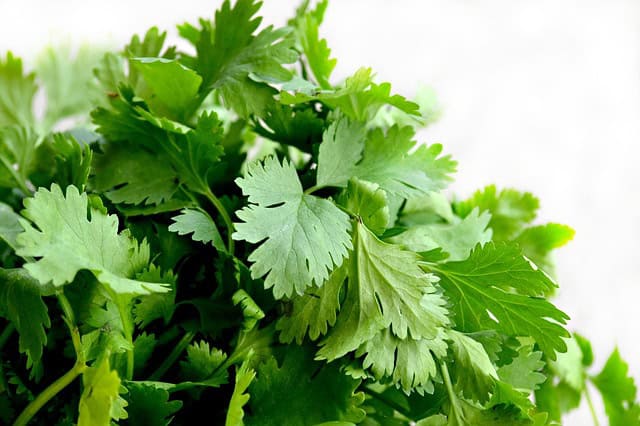
Cilantro can bolt quickly with high temperatures; therefore, planting in partial shade in May may extend its growing period. Sow seeds directly, as cilantro does not transplant well. Regardless, it requires regular moisture and prefers cooler conditions, making strategic planting crucial.
Chives
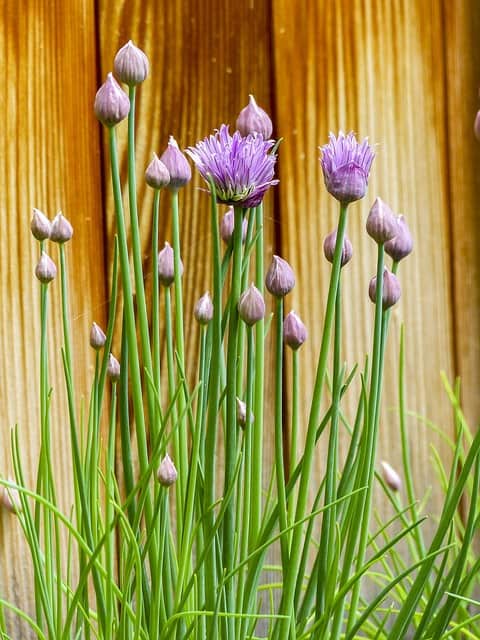
Chives are easy to grow from seeds or divisions and are best planted in May. They require full sun and well-drained soil with moderate watering. Chives can be harvested regularly and are known to deter certain pests in the garden while enhancing dishes with their mild onion flavor.
Mint
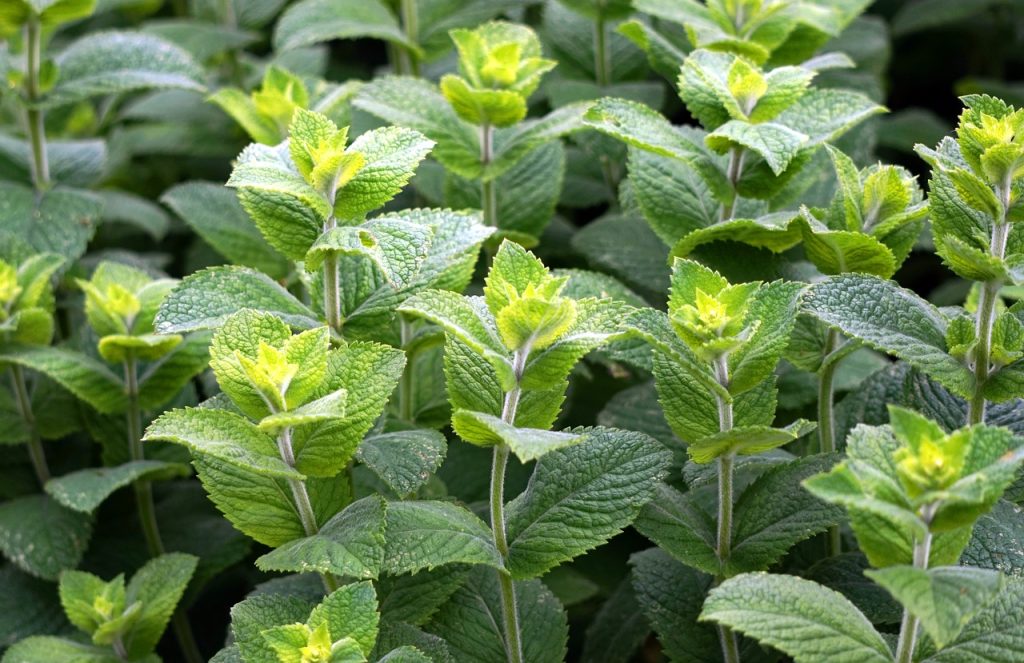
Mint is a vigorous grower that thrives in moist soils. Planting in May allows it to spread but can sometimes overtake other plants if not contained. It prefers partial shade and must be kept regularly watered. Consider planting it in pots to prevent unwanted spreading and enjoy fresh herbs all summer long.
Dill
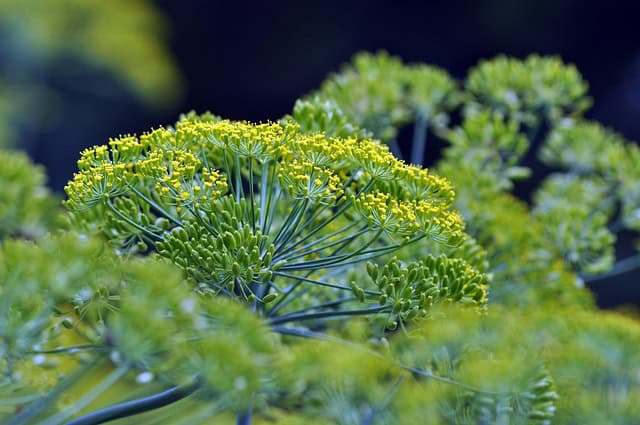
Dill is best planted directly as it can suffer from transplant shock. May planting ensures that this herb gets enough warmth for germination. Dill prefers full sun and well-drained soils but can bolt if temperatures rise too quickly. Regular watering will encourage healthy growth until harvest.
Sage
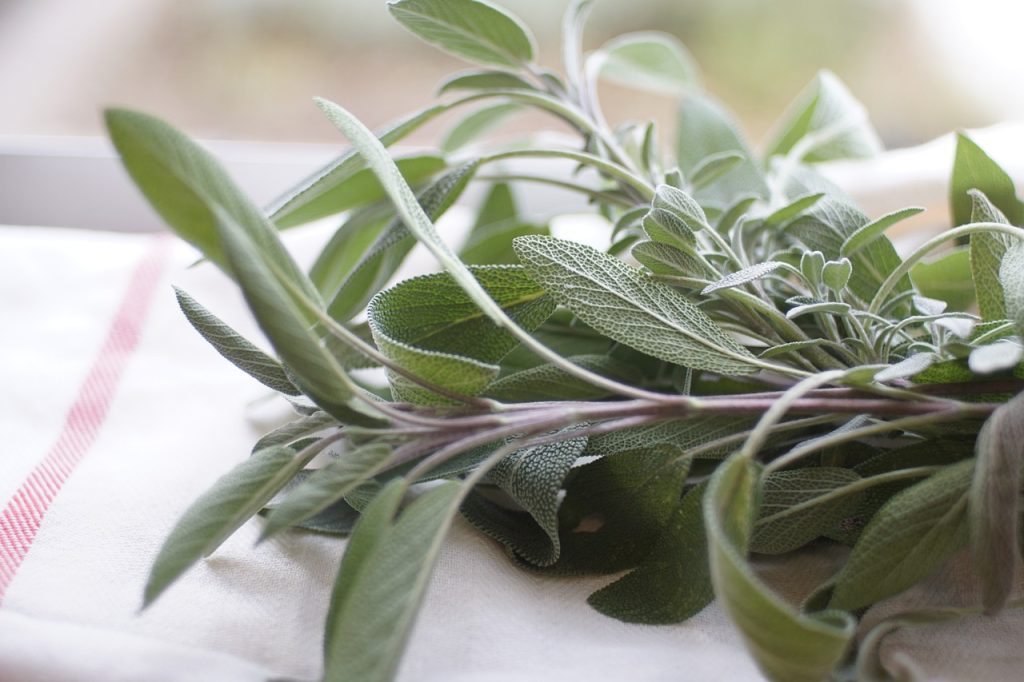
Sage thrives in full sun and prefers well-drained soil; plant in May to establish a strong root system. This herb benefits from regular pruning and can tolerate some drought once established. With minimal care, sage can provide fresh flavors for many culinary endeavors.
Parsley
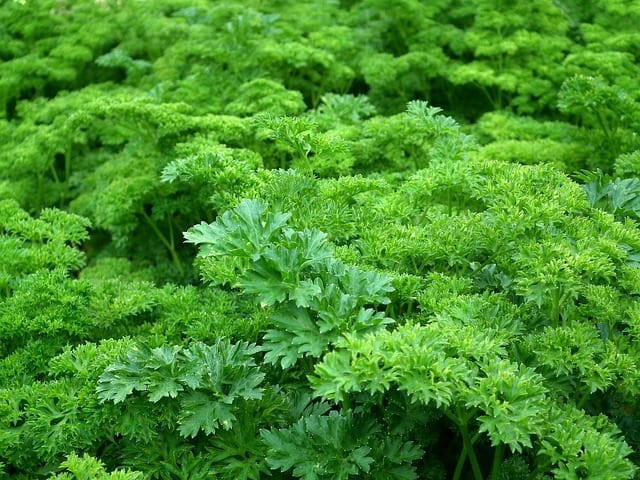
Parsley is versatile, growing well in various garden conditions. Plant in a slightly shaded area to avoid overheating, especially as summer approaches. Parsley requires consistent moisture and can be harvested regularly to promote new growth throughout the growing season.
Tropical Landscape Plants To Plant
Palms
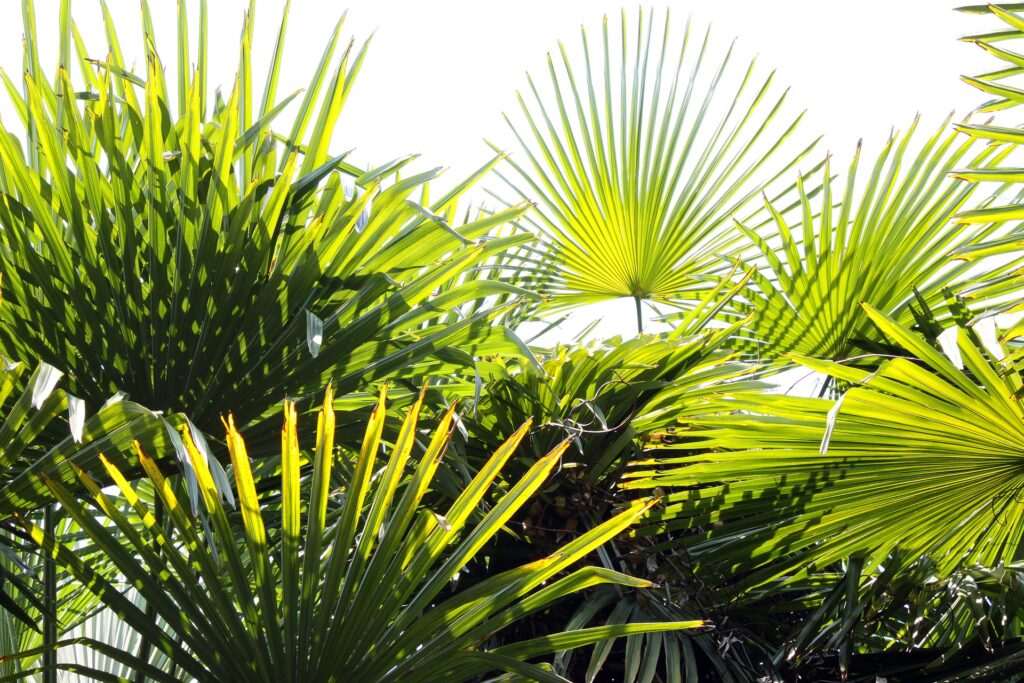
Planting palms in May sets them up to thrive, as the weather is warm enough to support root development. Ensure these trees receive full sun and are planted in well-drained soils to prevent root rot. Regular watering is important until they are established, and proper spacing will ensure they have room to grow.
Croton
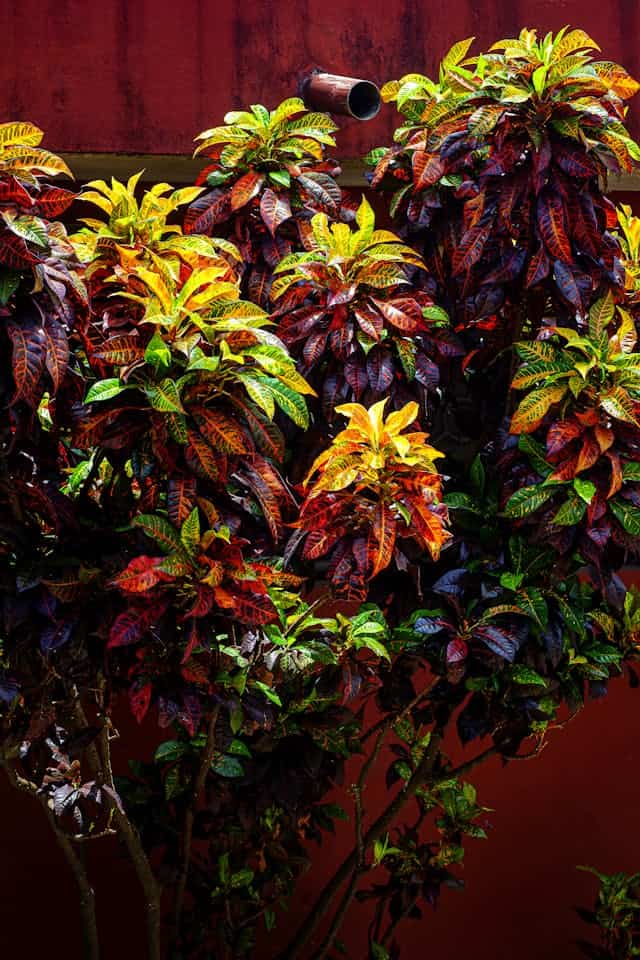
Croton plants are not only heat resistant but add brilliant splashes of color to any garden. Planting in May offers warmth and establishment before the hotter summer months. They prefer bright light and fertile, well-draining soil to flourish, so consider adding organic matter to the planting site.
Callistemon
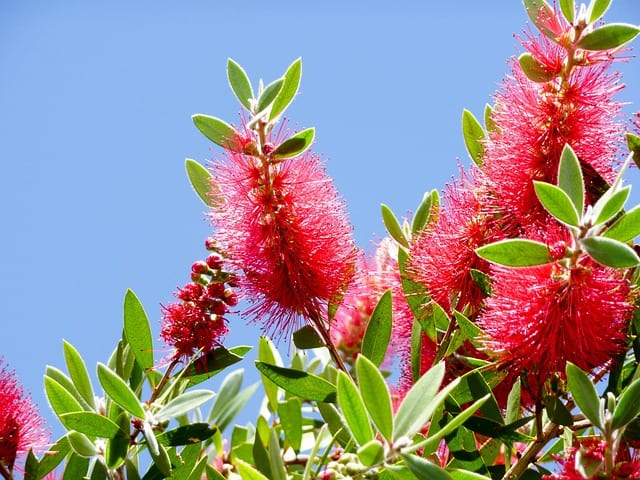
The bottlebrush plant thrives in Florida’s climate and establishes well when planted in May. It requires regular watering, especially in the first year of growth, and prefers well-drained soil. These striking plants attract hummingbirds, adding to your garden’s biodiversity.
Schefflera
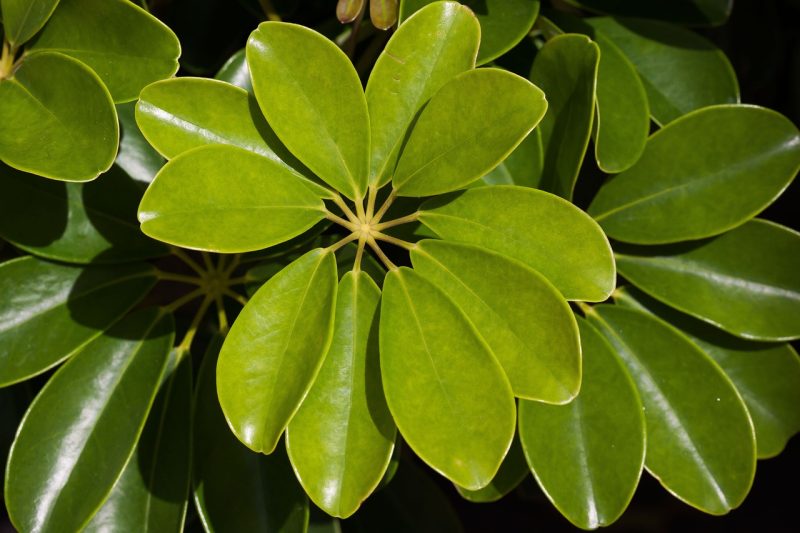
Schefflera is well-suited to tropical climates and adds lush greenery to the landscape. May planting allows these easy-care plants to thrive under warm weather conditions. They do best in partial shade and appreciate regular watering during growth periods, offering greenery that can grow into sizable focal points.
Caladium

Caladiums provide striking foliage with their colorful leaves. Planting in May allows these bulbs to grow strong before summer heat arrives. They prefer partial shade and moist soil, making them ideal for landscaping around trees or shaded areas.
Ficus
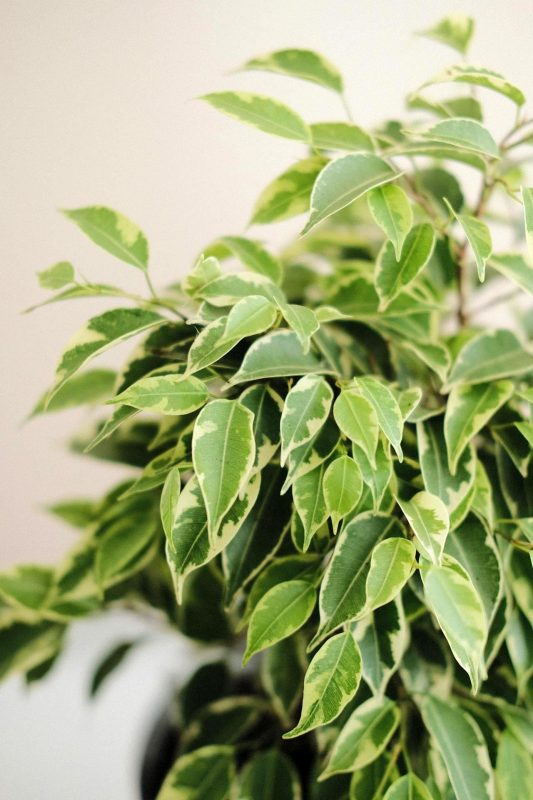
Planting ficus in May ensures that they have ample time to grow before heat peaks. These trees thrive in well-draining soil and do well in full to partial sunlight. Regular watering is crucial during their early growth phase; once established, they are relatively easy to maintain.
Dracaena
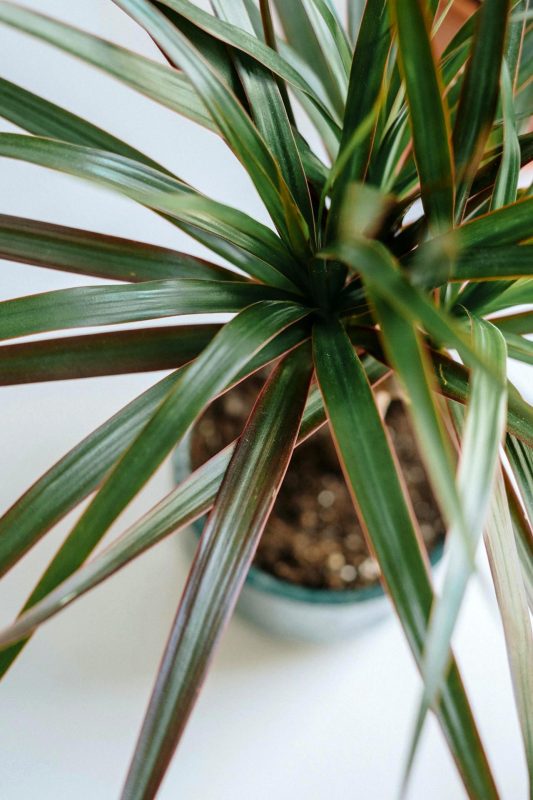
Dracaena makes an excellent addition to Florida landscapes, with many varieties to choose from. May is an ideal time to plant them; they require well-drained soil and moderate sunlight. Dracaena is relatively low-maintenance and thrives with little watering once established, making it perfect for tropical gardens.
Ginger
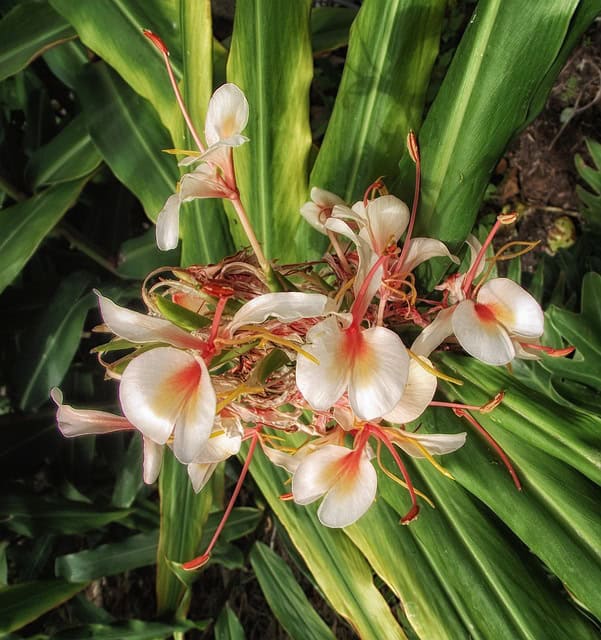
Ginger can be planted directly into the ground in May to establish before the heat. It thrives in moist, organic-rich soils and can benefit from partial shade to ensure adequate moisture retention. Make sure to keep the soil consistently moist, especially during the hotter summer months.
Hibiscus

Hibiscus can be used both as a flowering plant and bush for landscape enhancement. May planting allows for strong growth before summer heat peaks. They thrive in well-drained, nutrient-rich soils and prefer full sun for plenty of blooms throughout the summer months.
FAQ
When is the best time to plant in Florida?
May is one of the best months to plant in Florida, as the weather begins to warm up, allowing various vegetables, fruits, and flowers to thrive.
What are the best vegetables to plant in Florida in May?
Ideal vegetables for May planting include tomatoes, peppers, cucumbers, beans, and okra, all of which flourish in Florida’s warm temperatures.
Can I plant flowers in May in Florida?
Yes! Many flowers like bougainvillea, hibiscus, and zinnia can thrive when planted in May, flourishing throughout the summer months with vibrant blooms.
What fruits are suitable for planting now?
Fruits such as pineapple, mango, papaya, and guava thrive well in May, taking advantage of the warm weather for successful growth.
Are herbs easy to grow in Florida?
Yes! Herbs like basil, rosemary, and mint can be successfully planted in May, providing fresh flavors for culinary use throughout the season.
What are some excellent landscape plants I can use in my garden?
Choosing landscape plants like palms, crotons, and hibiscus is an excellent idea for adding visual appeal and tropical vibes to your Florida garden.



